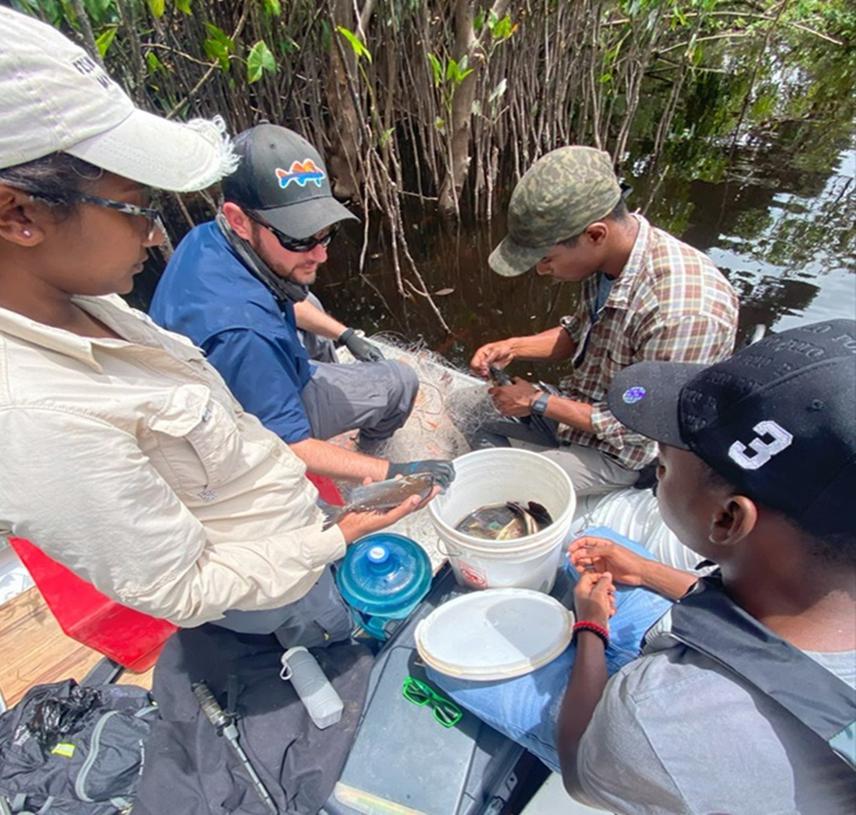Devya Hemraj-Naraine
Guyana has a rich biodiversity that provides an important basis for economic growth and development in fisheries, forestry, and agricultural sectors. However, in resource-rich areas, the land is destroyed and/or altered as companies unearth minerals like gold or diamonds, consequently, these activities negatively impact the biodiversity of my country. The evolution of Guyana’s river landscape has been shaped by many processes but involves the interactions between three major drainages, the Berbice, the Essequibo, and the Demerara. These rivers have changed in size and interconnectedness through geological time, leading to divergence among the animals living in the main channels and tributaries.

Devya Hemraj-Naraine and team removing fish from the gillnet. © Elion Beaton & Dillon Ross.
The Canje River is a scientifically unexplored territory despite its critical location between two major ancient basins—the Berbice and the Corentyne Rivers. The objective of this research is to unravel the interconnectedness of coastal drainages from a population or landscape genetics perspective, employing piranhas and pacus as model systems.
Header: Pristine Canje River. © Matthew Kolmann.